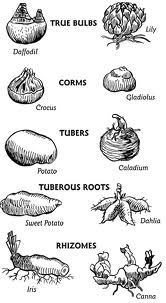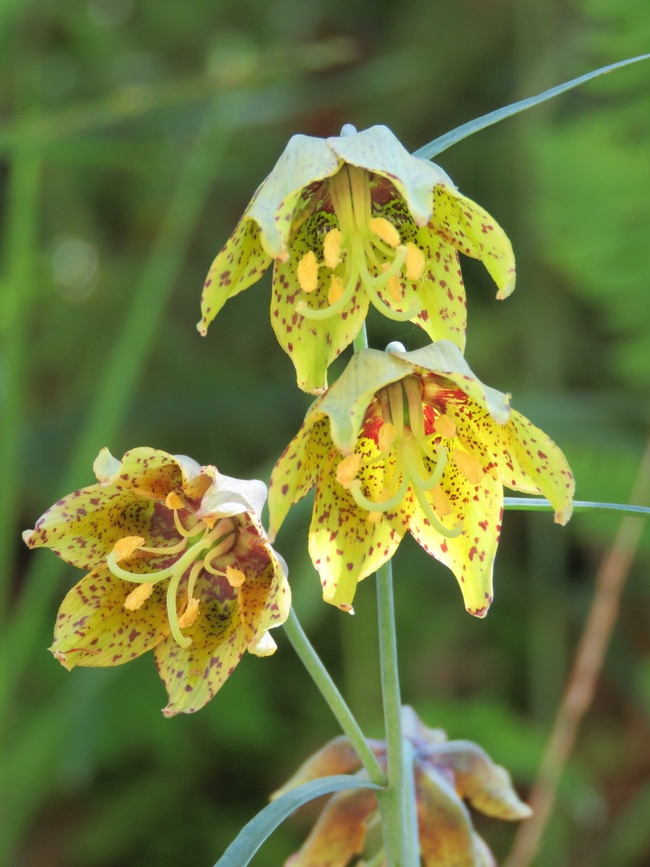Planting Bulbs for Spring Flowers
by Susanne von Rosenberg, UC Master Gardener of Napa County
It's September, and it's obvious that the days are getting shorter and autumn is on the way. One of the most pleasurable activities in a fall garden is planting spring-flowering bulbs. Spring-flowering bulbs add color to a late winter and spring garden, and the right kinds of bulbs will naturalize and reward your efforts for many years.
While we commonly refer to them all as bulbs, these spring-flowering marvels are actually five different types: true bulbs (such as daffodils and tulips), rhizomes (such as bearded iris), corms (freesias and gladiolas are common examples), tubers (cannas and anemones) and tuberous roots (like day lilies and ranunculus).
You see the most common types, including daffodils, tulips, irises, day lilies, calla lilies, dahlias and gladiolas, in many local gardens. Tulips are the most difficult to grow locally because our winters do not provide enough chill, and because gophers adore tulip bulbs. If you want tulips in your landscape, the best approach is to think of them as annuals that you will need to replant every year. Grow them in pots or put them in protective cages if you plant them in the ground. Most other types of bulbs will regrow every year, provided they get the basic care they need.
First, plant them correctly. The best method will depend greatly on the bulb type. True bulbs should be planted at a depth of two to three times their diameter. Bearded iris rhizomes, on the other hand, should be planted with the top of the rhizome at or just below the soil surface.
If you buy bulbs at a nursery, ask the staff about proper care and planting instructions for the types you're buying. If you buy mail order, the delivery should be accompanied by planting instructions.
In our area, bulbs should be planted in October or November, when the soil temperature has dropped below 60°F. All bulbs do best in welldrained soil and should be watered well after planting. If our rainy season starts at the normal time, you won't need to do any additional watering. If rain is delayed or below normal, water the bulbs to give them about the same amount of water and with the same frequency as they would get in a normal year.
Most bulbs need full sun, but some, such as calla lilies, prefer partial shade. You can plant the earlier spring-flowering bulbs under deciduous trees; they will have finished blooming by the time the trees leaf out fully and cast too much shade.
To keep your bulbs performing well year after year, let the foliage die back naturally after bloom. Those produce food that is stored in the bulb to nourish next year's flowers. Also give them a light application of phosphate-heavy fertilizer (such as bone meal) every year. After three or four years, many types of bulbs become crowded and need to be divided. You can tell that it's time to divide them when you see a lot of leaves growing in a crowded area, but you get fewer flowers than in previous years.
Many bulbs native to the Cape Province of South Africa, which also has a Mediterranean climate, will do well here and naturalize easily. Try spraxia (also known as wand flower or harlequin flower), ixia or babiana. Another interesting variety to consider is rain lily, a Mexican native (Zephyranthes) that looks a bit like a crocus and comes in many colors.
You can also plant native bulbs this fall. One advantage of natives is that they bloom when native insects need them. They are also adapted to our climate and do not require any special soil preparation.
There are more than 200 species of native California bulbs, corms and rhizomes. Some examples include Coast iris, blue-eyed grass (a very small native iris), snake lily, camas bulbs and fritillaria. The Calflora website (www.calflora.org) lists 23 native species.
If you buy native bulbs, make sure they are ethically sourced, not collected from the wild but propagated by the nursery that sells them. Because native bulbs are likely to be more expensive, it's particularly important to be well-informed about the growing conditions they require.
For example, camas bulbs prefer soil that is very moist in the spring and then dries out, conditions typical of seasonal wetlands and the edges of creeks. Give them a home in an area of your garden that is soggy during the wet season, but then dries out. They have a long flowering period (typically April through June).
Camas bulbs were used as a food source by native American tribes and are very appealing to gophers. They are one of the few native bulbs that need gopher protection. California native bulbs are a worthy addition to a native garden and also make great potted plants.
Next workshop: “Stinking Roses and Edible Alliums: Grow These Essentials for Your Kitchen” on Saturday, October 12, from 9:30 to 11:30 a.m., at the University of California Cooperative Extension, 1710 Soscol Avenue, Napa. For more details and online registration go to http://napamg.ucanr.edu or call 707-253-4221.
The UC Master Gardeners are volunteers who provide UC research-based information on home gardening and answer your questions. To find out more about upcoming programs or to ask a garden question, visit the Master Gardener website (http://napamg.ucanr.edu) or call (707) 253-4221 between 9 a.m. and noon on Mondays, Wednesdays or Fridays.
Attached Images:

